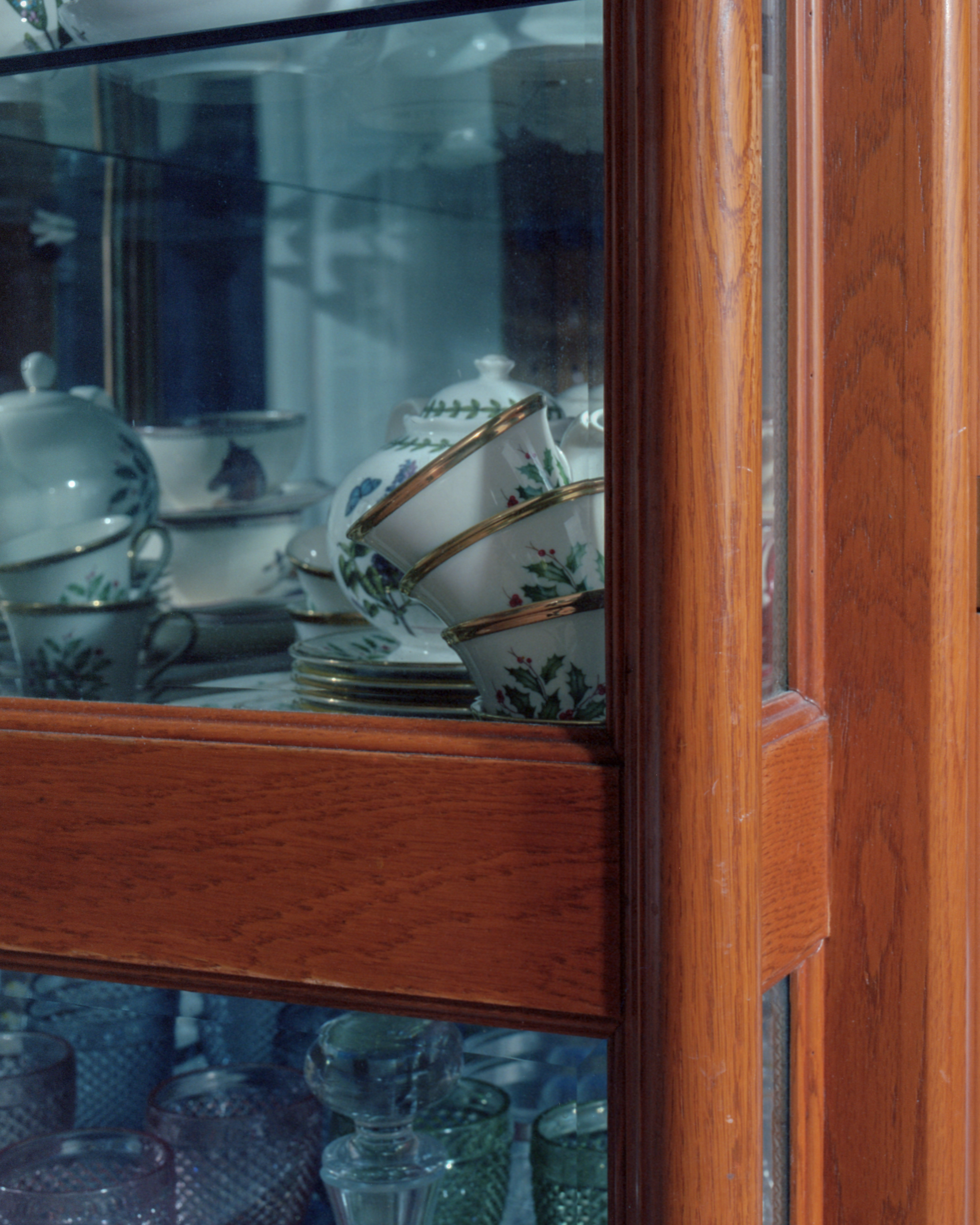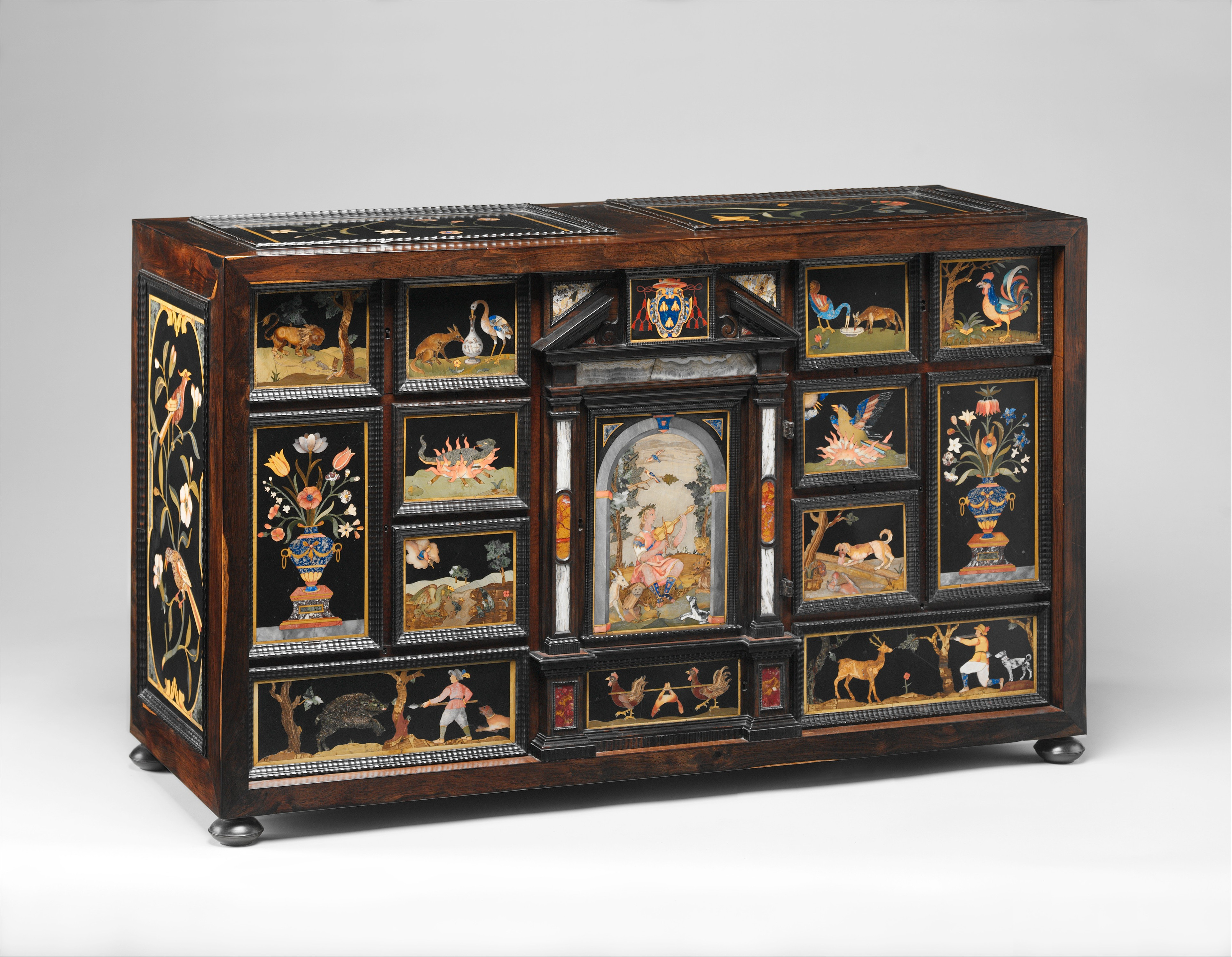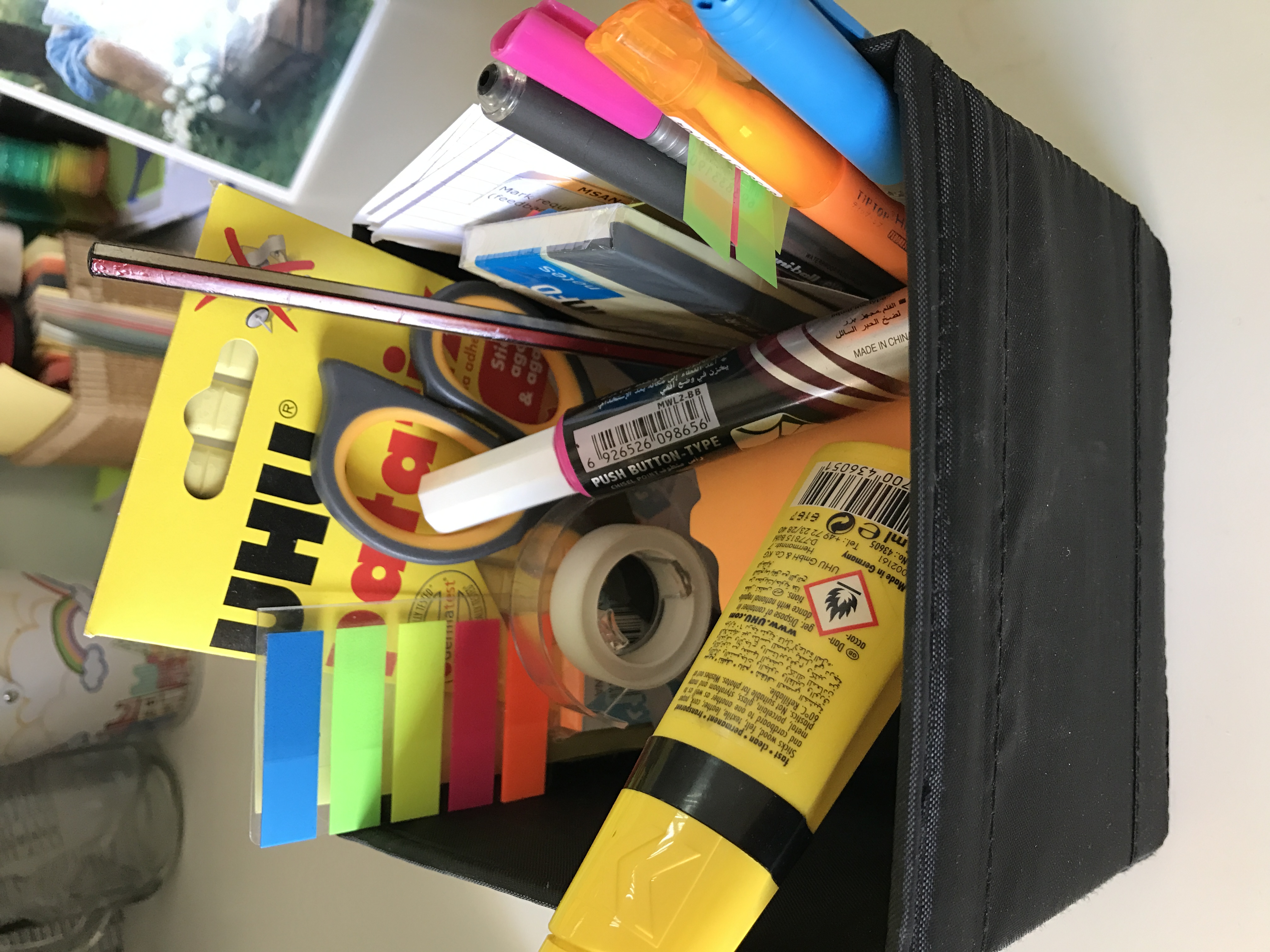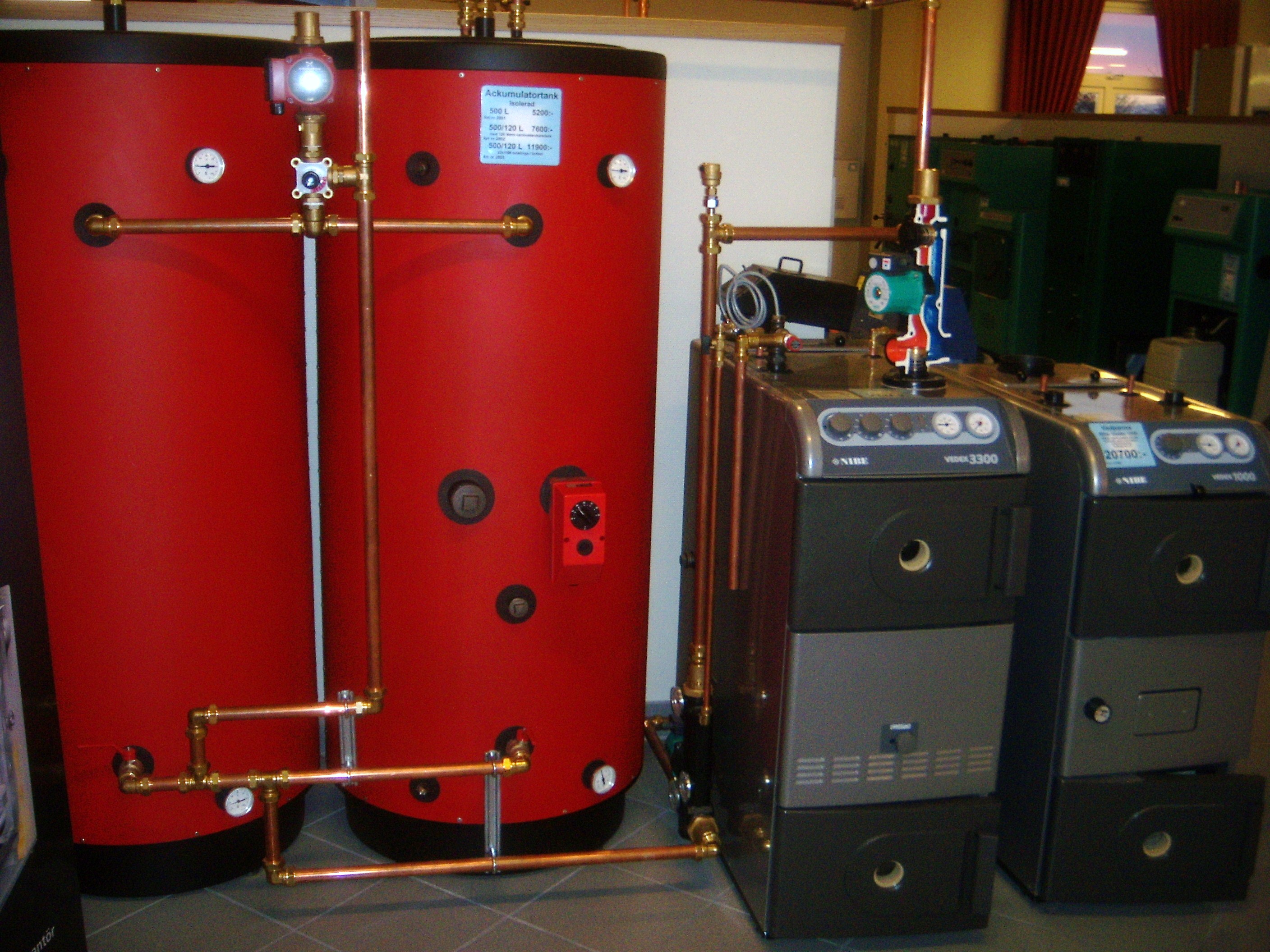|
Cupboard
A cupboard is a piece of furniture for enclosing dishware or grocery items that are stored in a home. The term is sometimes also used for any form of cabinet or enclosed bookcase. It gradually evolved from its original meaning: an open-shelved side table for displaying dishware, more specifically plates, cups and saucers. These open cupboards typically had between one and three display tiers, and at the time, a drawer or multiple drawers fitted to them.Andrews, John (2006) ''British Antique Furniture''. Antique Collectors' Club ; p. 226 Types of cupboards Airing cupboard An airing cupboard (or hot press) is a built-in storage space, sometimes of walk-in dimensions, containing a water heater, either an immersion heater for hot running water or a boiler for central heating water (hence, also "boiler cupboard"), or a hot water storage tank. Shelves, usually slatted to allow for circulation of heat, are positioned above or around the heater to provide room for clothing. The ... [...More Info...] [...Related Items...] OR: [Wikipedia] [Google] [Baidu] |
Furniture
Furniture refers to objects intended to support various human activities such as seating (e.g., Stool (seat), stools, chairs, and sofas), eating (table (furniture), tables), storing items, working, and sleeping (e.g., beds and hammocks). Furniture is also used to hold objects at a convenient height for work (as horizontal surfaces above the ground, such as tables and desks), or to store things (e.g., cupboards, Shelf (storage), shelves, and drawers). Furniture can be a product of design and can be considered a form of decorative art. In addition to furniture's functional role, it can serve a symbolic or Religion, religious purpose. It can be made from a vast multitude of materials, including metal, plastic, and wood. Furniture can be made using a variety of woodworking joints which often reflects the local culture. People have been using natural objects, such as tree stumps, rocks and moss, as furniture since the beginning of human civilization and continues today in some househol ... [...More Info...] [...Related Items...] OR: [Wikipedia] [Google] [Baidu] |
Drying Cabinet
A drying cabinet is today usually an electrical machine designed to expedite the drying of items - usually clothing - that are unsuitable for a mechanical clothes dryer. Such items may include delicate clothing care labeled as "hang dry", "dry flat" or "do not tumble dry" on their wash instructions, as well as items such as comforters, boots and coats. History In both Europe and America, wealthier and commercial properties sometimes had drying cabinets or drying rooms associated with their laundry rooms. The cabinets were of wood or cast iron, with a series of drying racks on wheels which were pulled in or out of the cabinet horizontally. The cabinet was heated by coal, gas or wood. The Shaker community still uses these cabinets. See also Airing Cupboard. However these cabinets and cupboards were intended for the general drying of laundry, whereas the modern cabinets are usually intended for items of clothing unsuitable for a traditional clothes dryer. Europe Since the 1980s, ... [...More Info...] [...Related Items...] OR: [Wikipedia] [Google] [Baidu] |
Cabinetry
A cabinet is a case or cupboard with shelves or drawers for storing or displaying items. Some cabinets are stand alone while others are built in to a wall or are attached to it like a medicine cabinet. Cabinets are typically made of wood (solid or with veneers or artificial surfaces), coated steel (common for medicine cabinets), or synthetic materials. Commercial grade cabinets usually have a melamine-particleboard substrate and are covered in a high-pressure decorative laminate commonly referred to as Wilsonart or Formica. Cabinets sometimes have one or more doors on the front, which are mounted with door hardware, and occasionally a lock. Cabinets may have one or more doors, drawers, or shelves. Short cabinets often have a finished surface on top that can be used for display, or as a working surface, such as the countertops found in kitchens. A cabinet intended to be used in a bedroom and with several drawers typically placed one above another in one or more columns inte ... [...More Info...] [...Related Items...] OR: [Wikipedia] [Google] [Baidu] |
Bookcase
A bookcase, or bookshelf, is a piece of furniture with horizontal shelf (storage), shelves, often in a cabinetry, cabinet, used to store books or other printed materials. Bookcases are used in private homes, public and university libraries, offices, schools, and bookstores. Bookcases range from small, low models the height of a table to high models reaching up to ceiling height. Shelves may be fixed or adjustable to different positions in the case. In rooms entirely devoted to the storage of books, such as libraries, they may be permanently fixed to the walls and/or floor. A bookcase may be fitted with glass doors that can be closed to protect the books from dust or moisture. Bookcase doors are almost always glazed with glass, so as to allow the spines of the books to be read. Especially valuable rare books may be kept in locked cases with wooden or glazed doors. A small bookshelf may also stand on some other piece of furniture, such as a desk or Chest (furniture), chest. Larger ... [...More Info...] [...Related Items...] OR: [Wikipedia] [Google] [Baidu] |
Linens
Linens, also referred to uncountably as linen, are fabric household goods intended for daily use, such as bedding, tablecloths, and towels. "Linens" may also refer to church linens, meaning the altar cloths used in church. History The earliest known household linens were made from thin yarn spun from flax fibres to make linen cloth. Ancient Egypt, Babylon, and Phoenicia all cultivated flax crops. The earliest surviving fragments of linen cloth have been found in Egyptian tombs and date to 4000 BCE. Flax fibres have been found in cloth fragments in Europe that date to the Neolithic prehistoric age. Cotton is another popular fibre for making cloth used for household linens. Its use in cloth-making also dates back to prehistoric times, in Indian subcontinent, China, Peru and Egypt. The Indian subcontinent was especially well known for high quality cotton cloth as early as 1500 BCE. Linen was an especially popular cloth during the Middle Ages in Europe, when cotton was an exotic ... [...More Info...] [...Related Items...] OR: [Wikipedia] [Google] [Baidu] |
Curio Cabinet
A curio cabinet is a specialised type of display case, made predominantly of glass with a metal or wood framework, for presenting collections of curios, like figurines or other interesting objects that invoke curiosity, and perhaps share a common theme. A curio cabinet may also be used to display a solitary object of special interest, such as a hand-crafted doll. Description While display cases for presenting products for sale (such as jewelry) are typically horizontal with a surface covered in felt, a curio cabinet is usually vertical with no felt. Most curio cabinets have glass on each side, glass shelves, and optionally a mirror at the back, to maximize visibility. Another purpose of a curio cabinet is to protect the value of a collection, which it does by preventing contact by dust and vermin. For added security, a locked door or removable panel allows the collection to be seen, while protecting it from damage and theft. See also * China cabinet * Stationery cabinet * ... [...More Info...] [...Related Items...] OR: [Wikipedia] [Google] [Baidu] |
China Cabinet
A china cabinet is a piece of furniture, usually with glass fronts and sides, used to hold and display porcelain ("china") or other ceramics. Typical china held in such cabinets often includes cups, plates, bowls, and glasses. Along with a table, chairs, and a sideboard, the china cabinet is one of the most typical elements of a traditional dining room in the Western world, though they may be placed in any room. Historically, they were used for especially highly decorated cabinet cups, that were too expensive and perhaps fragile for regular use, and made for collectors or to be given as presents. Aspects China cabinets are typically placed against a wall, opposite the door or windows. They are often set in a conspicuous place where china, silverware, and glassware can easily be seen by guests and accessed by the host. There is an innumerous number of forms for china cabinets, as sizes, shapes, and construction methods may vary. Traditional china cabinets have shelves lined with ... [...More Info...] [...Related Items...] OR: [Wikipedia] [Google] [Baidu] |
Livery
A livery is an identifying design, such as a uniform, ornament, symbol, or insignia that designates ownership or affiliation, often found on an individual or vehicle. Livery often includes elements of the heraldry relating to the individual or corporate body featured in the livery. Alternatively, some kind of a personal emblem or badge, or a distinctive colour, is featured. The word itself derives from the French language, French ''livrée'', meaning ''dispensed, handed over''. Most often it would indicate that the wearer of the livery was a servant, dependant, follower or friend of the owner of the livery, or, in the case of objects, that the object belonged to them. In the late medieval phenomenon of bastard feudalism, livery badges worn by the "retainers" of great lords, sometimes in effect private armies, became a great political concern in England. Etymology "In the ''Black Book'' of 1483, it was laid down that each person should receive '... for his Livery at night, h ... [...More Info...] [...Related Items...] OR: [Wikipedia] [Google] [Baidu] |
Whitechapel, Lancashire
Whitechapel is a tiny hamlet in the civil parish of Goosnargh in Lancashire, England. It lies on the border of the Forest of Bowland near the foot of Beacon Fell, and close to the neighbouring village of Inglewhite. Its name is marked as ''White Chapel'' on some maps. The area was known as "Threlfall" in the Domesday Book. A tiny 27×13-foot private chapel was built for the Threlfall family in Elizabethan times, and was rebuilt as St James' Church about 1738.Dewhurst, p.7 The churchyard contains a sundial dated 1745 which is a Grade II listed building. The name "Whitechapel" came into use in the early nineteenth century, named after the church. It was originally a part of Goosnargh ecclesiastical parish, but acquired independent parish status in 1846. The village primary school originated in 1705, within the church, acquiring its own building in 1810. On Pancake Day the children of Whitechapel, Inglewhite and the surrounding area keep alive an age-old tradition that was on ... [...More Info...] [...Related Items...] OR: [Wikipedia] [Google] [Baidu] |
Stationery
Stationery refers to writing materials, including cut paper, envelopes, continuous form paper, and other office supplies. Stationery usually specifies materials to be written on by hand (e.g., letter paper) or by equipment such as computer printers. History of stationery Originally, the term 'stationery' referred to all products sold by a stationer, whose name indicated that his book shop was on a fixed spot. This was usually somewhere near a university, and permanent, while medieval trading was mainly carried on by itinerant peddlers (including chapmen, who sold books) and others (such as farmers and craftsmen) at markets and fairs. It was a unique term used between the 13th and 15th centuries in the manuscript culture. Stationers' shops were places where books were bound, copied, and published. These shops often loaned books to nearby university students for a fee. The books were loaned out in sections, allowing students to study or copy them, and the only way to get the ... [...More Info...] [...Related Items...] OR: [Wikipedia] [Google] [Baidu] |
Hot Water Storage Tank
A hot water storage tank (also called a hot water tank, thermal storage tank, hot water thermal storage unit, heat storage tank, hot water cylinder, and geyser) is a water tank used for storing hot water for space heating or domestic use. Water is a convenient heat storage medium because it has a high specific heat capacity. This means, compared to other substances, it can store more heat per unit of weight. Water is non-toxic and low cost. An efficiently insulated tank can retain stored heat for days, reducing fuel costs. Hot water tanks may have a built-in gas or oil burner system, electric immersion heaters. Some types use an external heat exchanger such as a central heating system, or heated water from another energy source. The most typical, in the domestic context, is a fossil-fuel burner, electric immersion elements, or a district heating scheme. Water heaters for washing, bathing, or laundry have thermostat controls to regulate the temperature, in the range of , and a ... [...More Info...] [...Related Items...] OR: [Wikipedia] [Google] [Baidu] |









